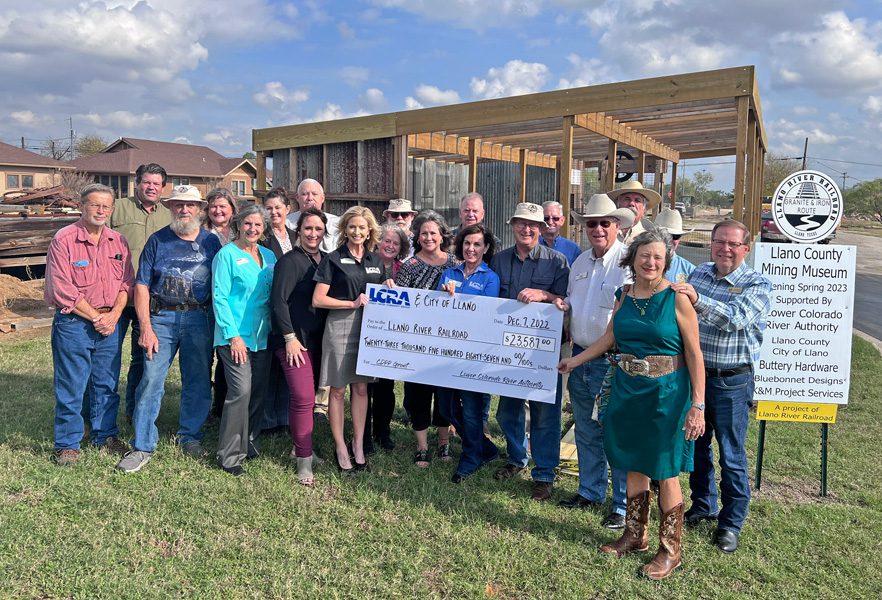LCRA, City of Llano award $23,587 grant to Llano River Railroad
New outdoor museum exhibit to showcase Llano’s mining history
Dec. 7, 2022

The Community Development Partnership Program grant, along with $16,386 in matching funds from the recipient, will allow the Llano River Railroad to restore mining artifacts and create a Llano Mining Museum in an outdoor pavilion next to the Llano Train Depot, which houses the Llano Railroad Museum, Llano Chamber of Commerce and visitor’s center.
“We are excited about the grant because it will enable us to complete a project that will preserve and document an important heritage along with the artifacts that illustrate the story,” said Steve Roberts, Llano River Railroad president.
The mining museum will demonstrate what a prospecting mine camp looked like in a display that will include a winch, pithead gear, ore carts, carbide canisters, empty dynamite boxes, and lamps, along with various hand tools. The items came primarily from a Llano County mine that was active from the late 1800s until the 1930s.
“As part of the exhibit, samples of the various ores that were mined in the area will be displayed along with the story of how Llano was, for a while, a Wild West gold rush town with saloons and gambling dens,” Roberts said.
The railroad came to Llano in the late 1880s and was known as the Granite and Iron route. The tracks are listed on the National Register of Historic Places. Roberts said it was the prospect of wealth from mining that brought the railroad to town.
“The railroad came to town because speculators were promoting the idea that enormous wealth would be generated by mining the minerals that were formed by the Llano Uplift,” Roberts said. “It was gold and silver that got the investors most excited, but iron ore was held out as a promising mineral, as well. Over the years, various other minerals were mined including graphite, talc, calcite, feldspar, copper, serpentine and marble but none of these were enduring financial successes. Granite became one of the most important minerals.”
The railroad was key to the development of the City of Llano and Llano County.
“Because the railroad came to Llano, the city became a distribution center for the surrounding counties,” Roberts said. “In fact, one of Llano’s major employers now is a wholesale hardware and builder’s supply merchant that was established in 1892, the year the railroad arrived. Local ranchers and farmers also were able to ship their livestock and products out using the railroad. In the days before road transport developed, this made a huge difference.”
The community grant is one of 46 grants awarded recently through LCRA’s Community Development Partnership Program, which helps volunteer fire departments, local governments, emergency responders and nonprofit organizations fund capital improvement projects in LCRA’s wholesale electric, water and transmission service areas. The program is part of LCRA’s effort to give back to the communities it serves.
Applications for the next round of grants will be accepted in January. More information is available at lcra.org/cdpp.
About LCRA
The Lower Colorado River Authority serves customers and communities throughout Texas by managing the lower Colorado River; generating and transmitting electric power; providing a clean, reliable water supply; and offering outdoor adventures at more than 40 parks along the Colorado River from the Texas Hill Country to the Gulf Coast. LCRA and its employees are committed to fulfilling our mission to enhance the quality of life of the Texans we serve through water stewardship, energy and community service. LCRA was created by the Texas Legislature in 1934 and receives no state appropriations. For more information, visit lcra.org.
Media Contact
Clara Tuma
512–578–3292
[email protected]


Social Media